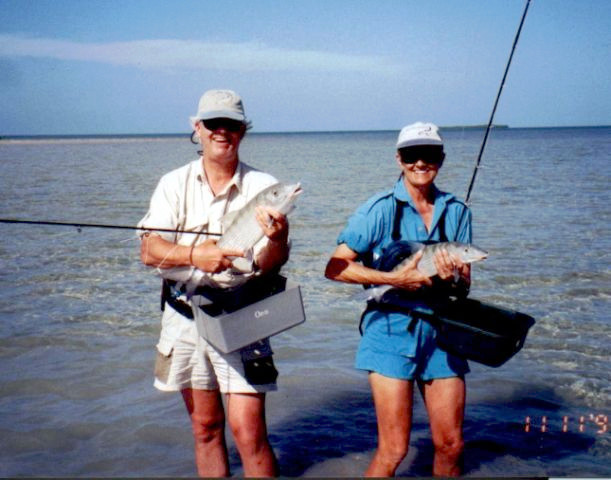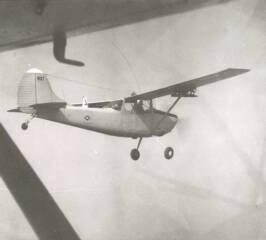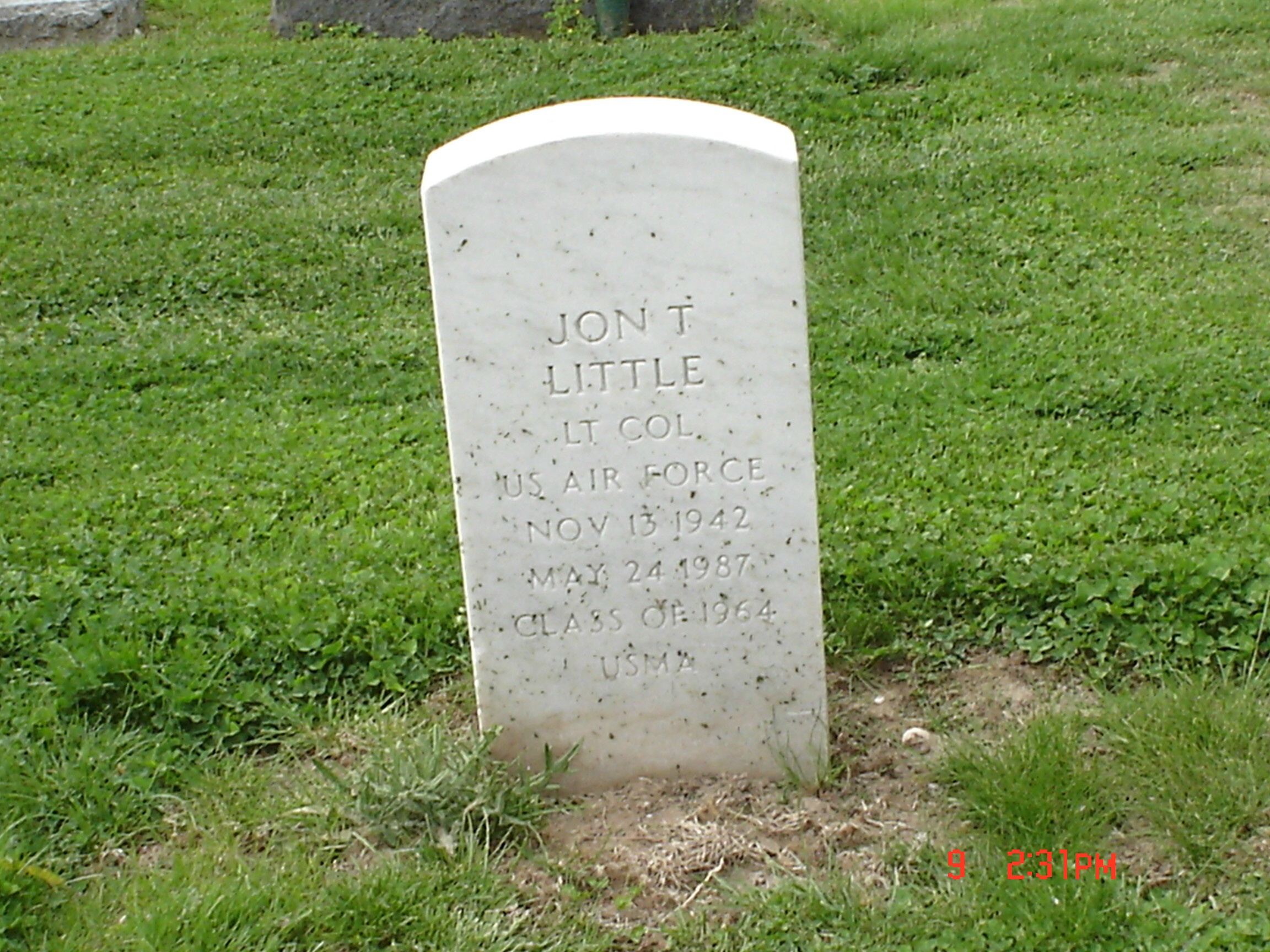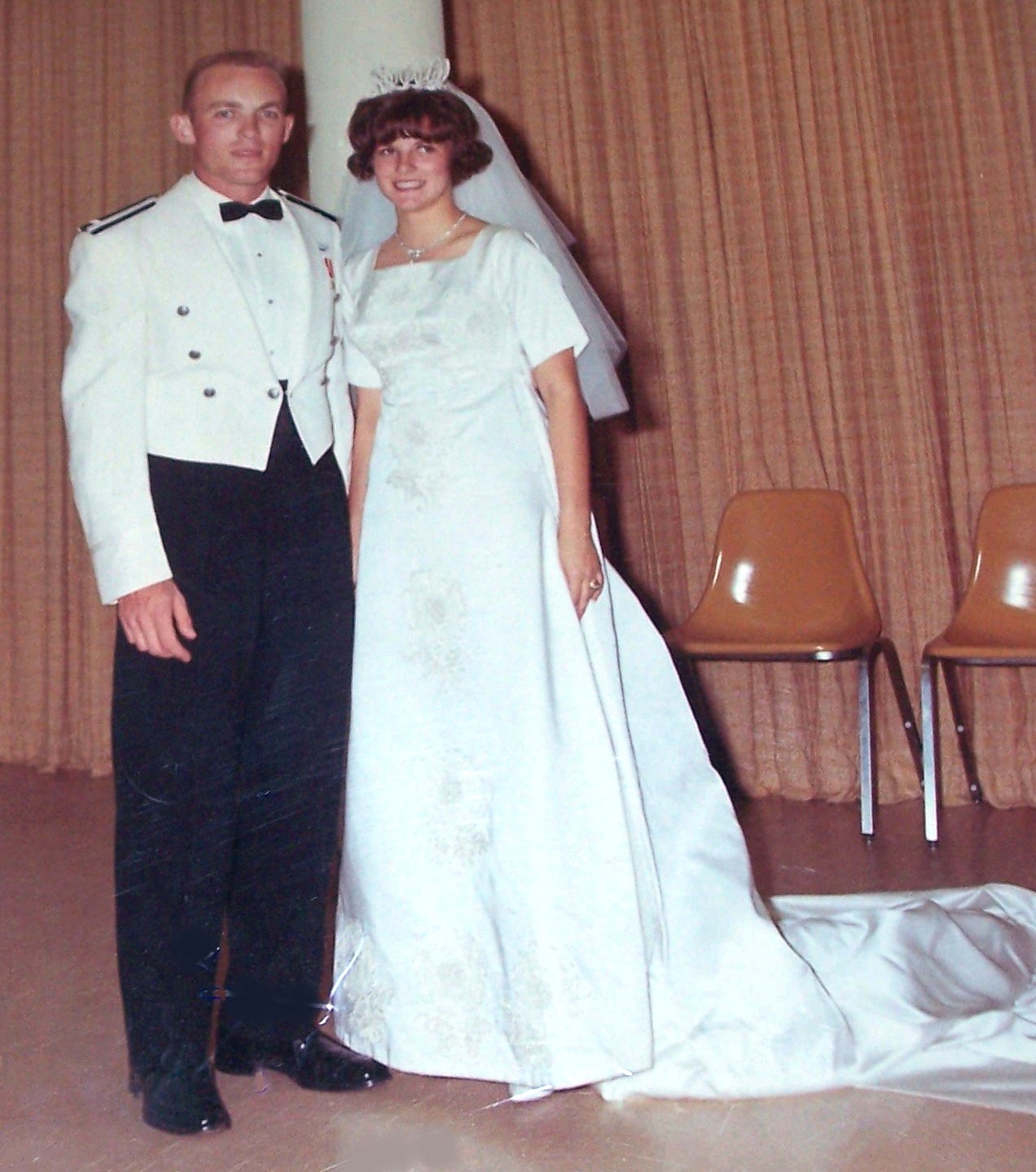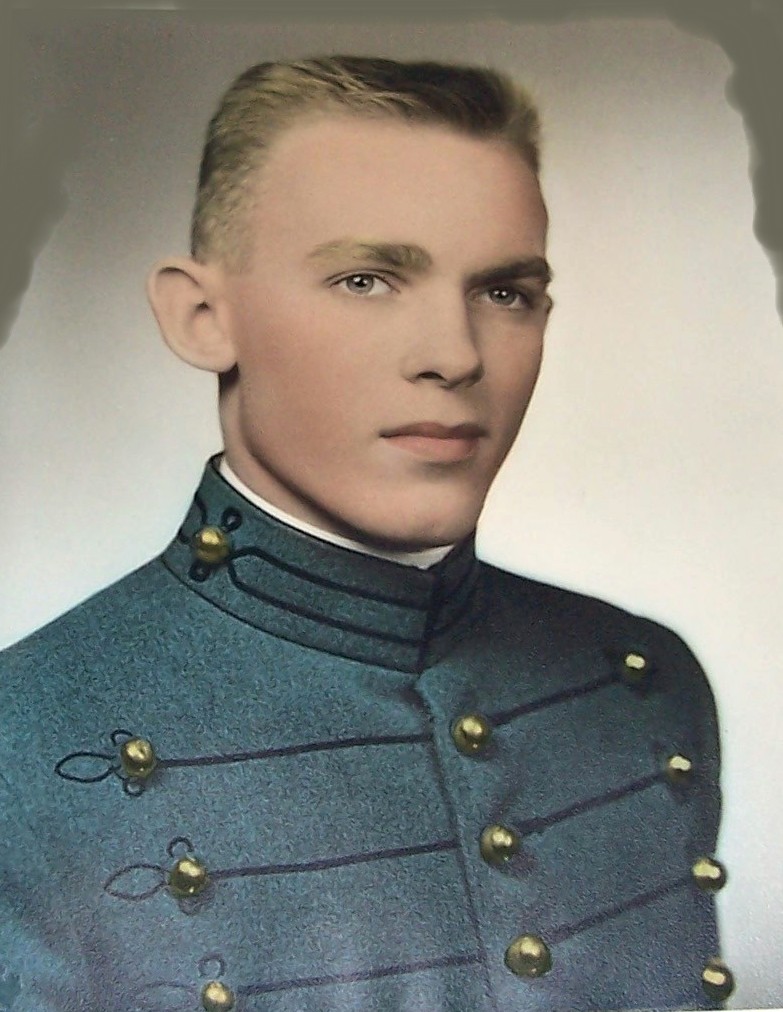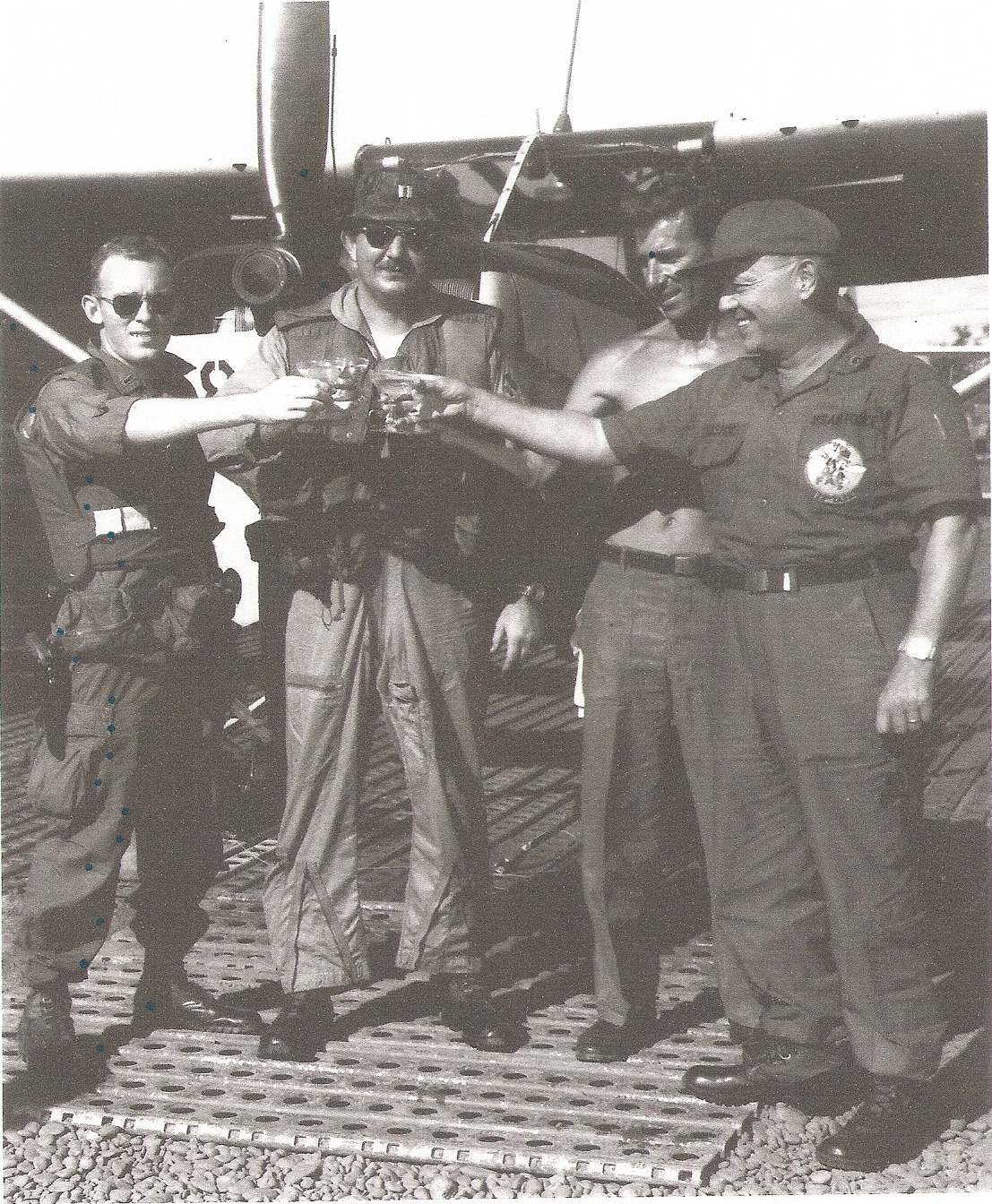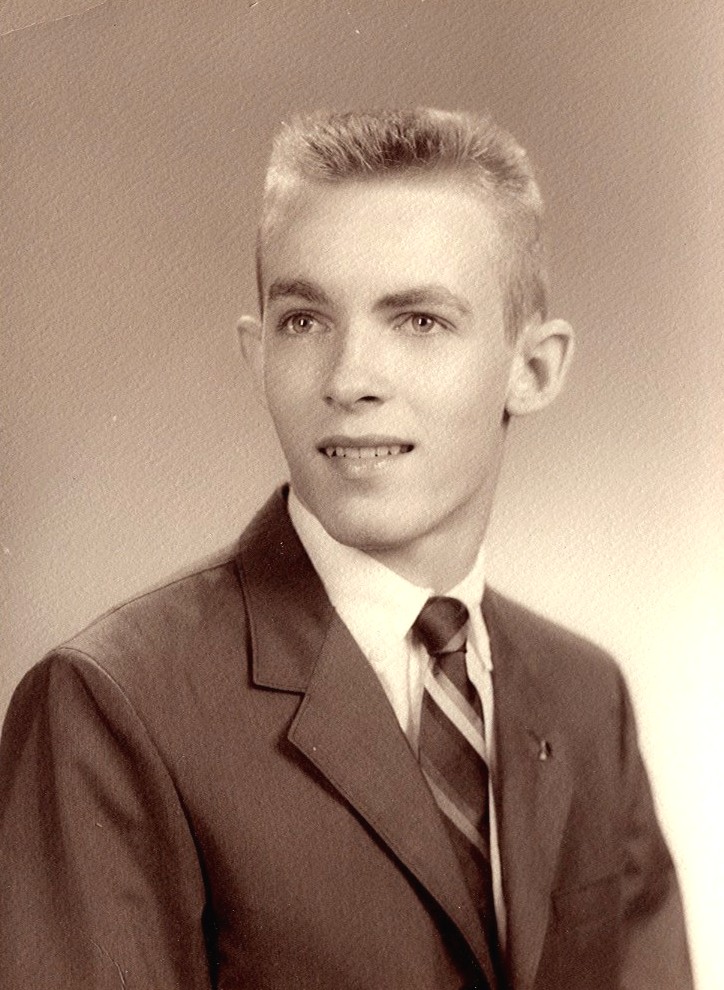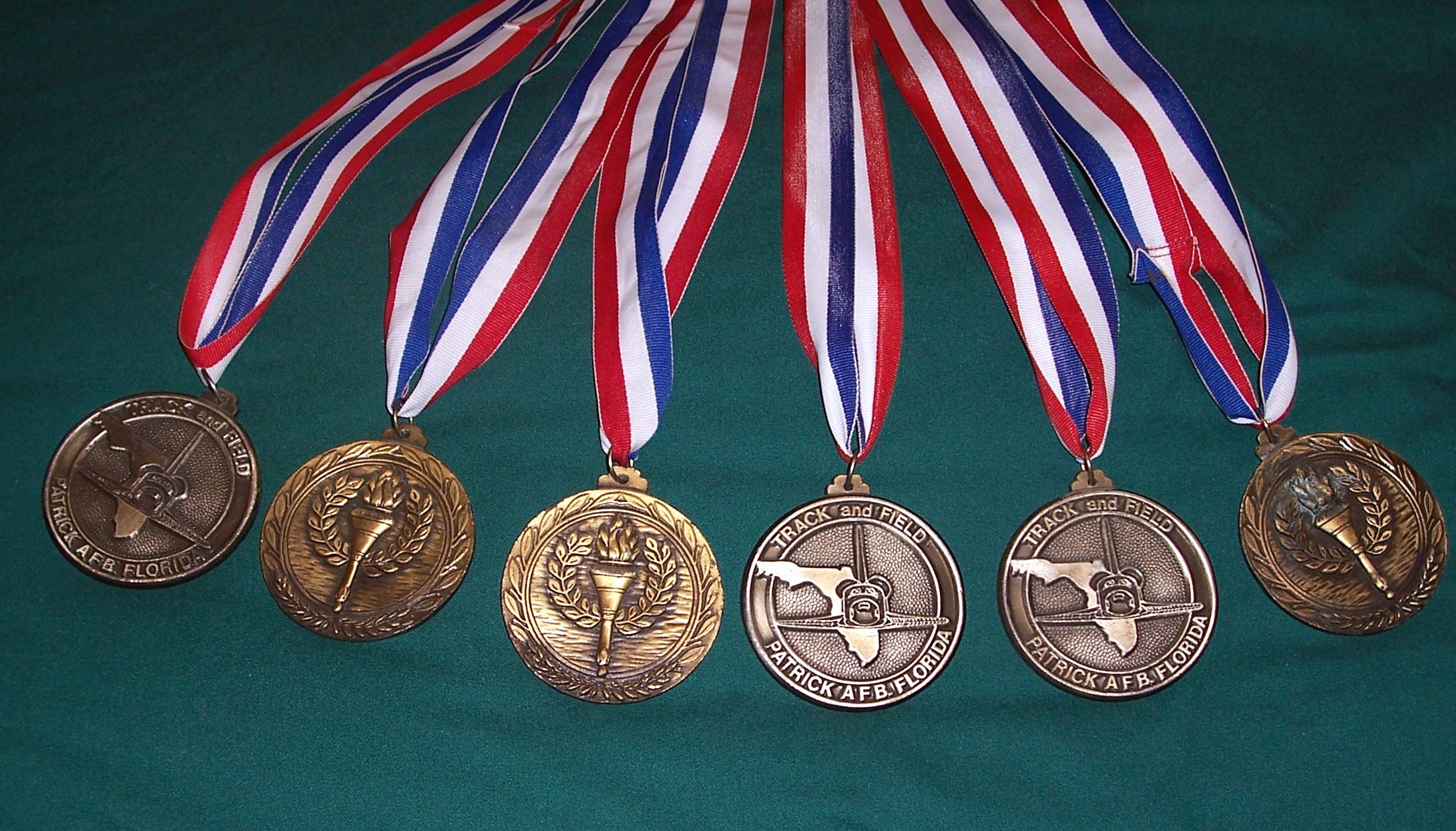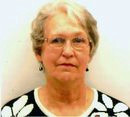 About three years ago, a classmate I haven’t seen or talked to since we graduated from high school in 1960 called my office in Washington, D.C., to enlist my help in finding information about a fellow graduate who died almost 20 years ago.
About three years ago, a classmate I haven’t seen or talked to since we graduated from high school in 1960 called my office in Washington, D.C., to enlist my help in finding information about a fellow graduate who died almost 20 years ago.
 Don Pierce planned to nominate Lieutenant Colonel Jon Thomas Little, USAF (Ret.), for nomination to the Fern Creek High School “Hall of Fame,” but the only information Pierce could find was a brief paragraph listing Little’s military assignments during 23 years of service.
Don Pierce planned to nominate Lieutenant Colonel Jon Thomas Little, USAF (Ret.), for nomination to the Fern Creek High School “Hall of Fame,” but the only information Pierce could find was a brief paragraph listing Little’s military assignments during 23 years of service.
 The last time I saw either of these guys was at Freedom Hall in Louisville, Kentucky on graduation night, so Pierce’s call came like a “bolt out of the blue.”
The last time I saw either of these guys was at Freedom Hall in Louisville, Kentucky on graduation night, so Pierce’s call came like a “bolt out of the blue.”
 Perhaps you’ve received a similar call. Like most of us “cold war kids,” we left home after graduation. Some members of the class, like my buddy Dale Radford, immediately went to work at the Ford plant. Others like Pierce, Little and I went to college and wound up in the military.
Perhaps you’ve received a similar call. Like most of us “cold war kids,” we left home after graduation. Some members of the class, like my buddy Dale Radford, immediately went to work at the Ford plant. Others like Pierce, Little and I went to college and wound up in the military.
 Little graduated from the United States Military Academy at West Point, Class of 1964. He was commissioned as a Second Lieutenant in the United States Air Force.
Little graduated from the United States Military Academy at West Point, Class of 1964. He was commissioned as a Second Lieutenant in the United States Air Force.
 After earning his pilot wings at Laredo Air Force Base, Texas, Lt. Little began a serious relationship with a young woman he met there, while playing in the “Ragtops,” a rock and roll band he and other airmen had formed.
After earning his pilot wings at Laredo Air Force Base, Texas, Lt. Little began a serious relationship with a young woman he met there, while playing in the “Ragtops,” a rock and roll band he and other airmen had formed.
 Jack Little married Jane Sawyer in May, 1966 and began his flying career “hauling trash,” a term he used to describe flying C-124 Globemaster IIs for the 23rd Military Airlift Squadron at Hill AFB, Utah.
Jack Little married Jane Sawyer in May, 1966 and began his flying career “hauling trash,” a term he used to describe flying C-124 Globemaster IIs for the 23rd Military Airlift Squadron at Hill AFB, Utah.
 The aircraft carried a crew of five and could haul 200 troops. Pilots called the plane “Old Shakey,” because when they advanced the throttles on the four 3,800 hp Pratt & Whitney engines, the big transport plane literally shook as it lumbered down the runway. Jack hated flying transports. While waiting for an F-100 Super Sabre class to begin he was offered an assignment as a Forward Air Controller or FAC in military lingo. He jumped at the chance to get out of C-124s.
The aircraft carried a crew of five and could haul 200 troops. Pilots called the plane “Old Shakey,” because when they advanced the throttles on the four 3,800 hp Pratt & Whitney engines, the big transport plane literally shook as it lumbered down the runway. Jack hated flying transports. While waiting for an F-100 Super Sabre class to begin he was offered an assignment as a Forward Air Controller or FAC in military lingo. He jumped at the chance to get out of C-124s.
 In 1966, First Lieutenant Jon Thomas Little, known as “Jack” to his high school buddies, was assigned to 23rd TASS, a tactical air support squadron in South Vietnam; but, when he arrived in Saigon, he was told he’d be stationed at a clandestine base in Thailand, about eight miles west of Laos.
In 1966, First Lieutenant Jon Thomas Little, known as “Jack” to his high school buddies, was assigned to 23rd TASS, a tactical air support squadron in South Vietnam; but, when he arrived in Saigon, he was told he’d be stationed at a clandestine base in Thailand, about eight miles west of Laos.
The 23rd’s theater of operations was the “Steel Tiger” portion of the Ho Chi Minh Trail, one of the most deadly stretches in Hanoi’s critical supply line for North Vietnamese and Viet Cong forces in South Vietnam.
“The Trail,” as it was called, was a misnomer. It was a network of roads that snaking their way along the Laotian border. A heavy canopy of jungle trees and foliage concealed truck and troop traffic from the air. It also hid deadly anti-aircraft batteries that protected the NVA lifeline.
THE LONG GRAY LINE
 It took years to prepare Jack Little for the Vietnam War. His sister, Sue, who still lives in the family home in Kentucky, says her brother always wanted to be a soldier. Their father was an infantry officer during World War II. A relative, a West Pointer, helped Jack gain a Congressional appointment to the United States Military Academy. Congressman Frank W. Burke sent Jack the congratulatory telegram.
It took years to prepare Jack Little for the Vietnam War. His sister, Sue, who still lives in the family home in Kentucky, says her brother always wanted to be a soldier. Their father was an infantry officer during World War II. A relative, a West Pointer, helped Jack gain a Congressional appointment to the United States Military Academy. Congressman Frank W. Burke sent Jack the congratulatory telegram.
 William Murphy first met Cadet Little in September 1962 when they were assigned to the same room in A-2, an old barracks at West Point where Ulysses S. Grant had carved his initials into a ceiling beam.
William Murphy first met Cadet Little in September 1962 when they were assigned to the same room in A-2, an old barracks at West Point where Ulysses S. Grant had carved his initials into a ceiling beam.
 “When Jack first entered the room, he was carrying a pair of white track shoes and his beloved Fender guitar,” said Murphy. Jack played in a rock and roll band and sang in the West Point Glee Club, which appeared on the Ed Sullivan Show.
“When Jack first entered the room, he was carrying a pair of white track shoes and his beloved Fender guitar,” said Murphy. Jack played in a rock and roll band and sang in the West Point Glee Club, which appeared on the Ed Sullivan Show.
 “He had a good record player and loved to listen to Elvis Presley, Bo Diddly, Slim Harpo and Louisiana Red,” said Murphy, a Montana native who had never heard of the last two artists.
“He had a good record player and loved to listen to Elvis Presley, Bo Diddly, Slim Harpo and Louisiana Red,” said Murphy, a Montana native who had never heard of the last two artists.
“Maybe they were popular in Kentucky,” Murphy said.
 Little loved to pull pranks in high school, but he took them to new heights at the academy. When two upper classmen returned from a weekend in New York City, they found their room stuffed with paper. While they were gone, Little and Murphy had plebes stuff their room from floor to ceiling with newspapers. As a result, the “firsties” couldn’t change into their uniforms and had to march to the mess hall in civilian clothes. The Officer-of-the-Day was not amused and wrote them up.
Little loved to pull pranks in high school, but he took them to new heights at the academy. When two upper classmen returned from a weekend in New York City, they found their room stuffed with paper. While they were gone, Little and Murphy had plebes stuff their room from floor to ceiling with newspapers. As a result, the “firsties” couldn’t change into their uniforms and had to march to the mess hall in civilian clothes. The Officer-of-the-Day was not amused and wrote them up.
 Little also loved popcorn, but popcorn poppers were contraband at West Point. That didn’t scare Cadet Little who hung his by a nail inside the chimney of the room’s Civil War-era fireplace. One night the nail came out of the masonry and the popper fell down the chimney, knocking loose over a hundred years of soot as it fell. The incident occurred just prior to lights out on the eve of a room inspection. Needless to say, the First Classmen in the room below didn’t get any sleep that night, as they worked feverishly to return their room to white glove condition.
Little also loved popcorn, but popcorn poppers were contraband at West Point. That didn’t scare Cadet Little who hung his by a nail inside the chimney of the room’s Civil War-era fireplace. One night the nail came out of the masonry and the popper fell down the chimney, knocking loose over a hundred years of soot as it fell. The incident occurred just prior to lights out on the eve of a room inspection. Needless to say, the First Classmen in the room below didn’t get any sleep that night, as they worked feverishly to return their room to white glove condition.
 “We spent many hours trying to figure out how to get the parade field’s newly installed sprinkler system to come on during a parade,” laughed Murphy.
“We spent many hours trying to figure out how to get the parade field’s newly installed sprinkler system to come on during a parade,” laughed Murphy.
 At their 20th Reunion, former classmates overheard them talking about that “prank of pranks.” The next day when the Long Gray Line passed in review, the sprinkler system came on. Someone else had solved the problem, but Little and Murphy were blamed for the incident, which included military policeman desperately to cover the sprinkler heads with their helmets, before the Cadet Corps was soaked to the skin. Because they laughed so hard that day, Little and Murphy were blamed for the prank by their classmates.
At their 20th Reunion, former classmates overheard them talking about that “prank of pranks.” The next day when the Long Gray Line passed in review, the sprinkler system came on. Someone else had solved the problem, but Little and Murphy were blamed for the incident, which included military policeman desperately to cover the sprinkler heads with their helmets, before the Cadet Corps was soaked to the skin. Because they laughed so hard that day, Little and Murphy were blamed for the prank by their classmates.
 During their senior year at West Point, when it came time to bid for a particular branch in the U.S. Army, Jack told Bill he was going to seek a commission in the U.S. Air Force.
During their senior year at West Point, when it came time to bid for a particular branch in the U.S. Army, Jack told Bill he was going to seek a commission in the U.S. Air Force.
 “I called him a traitor,” said Murphy, “but he patiently explained to me that by learning to fly, about $110 per month would be added to our Second Lieutenant’s pay of $222.30 monthly.”
“I called him a traitor,” said Murphy, “but he patiently explained to me that by learning to fly, about $110 per month would be added to our Second Lieutenant’s pay of $222.30 monthly.”
In addition, Little told Murphy pilots weren’t required to sleep in fox holes or tents. But Jack really wanted the extra cash to buy a white 1964 Pontiac Lemans convertible. Not be outdone by his roommate, Murphy ordered a white 1964 Pontiac Lemans hardtop.
 There were only 12 Air Force pilot slots open to the Class of 64 and both Little and Murphy lucked out. Because Murphy had a higher class standing, he was selected to fly fighters. Little had to settle for prop-powered transports, until the “Bird Dog” came along.
There were only 12 Air Force pilot slots open to the Class of 64 and both Little and Murphy lucked out. Because Murphy had a higher class standing, he was selected to fly fighters. Little had to settle for prop-powered transports, until the “Bird Dog” came along.
LIFE IN THE SLOW LANE
 The O-1 “Bird Dog” was a single engine, tail dragging aircraft with a cruising speed of about 80 knots, depending on which way the wind was blowing. Captain Eddie Rickenbacker probably flew faster over the trenches on the Western Front in World War I.
The O-1 “Bird Dog” was a single engine, tail dragging aircraft with a cruising speed of about 80 knots, depending on which way the wind was blowing. Captain Eddie Rickenbacker probably flew faster over the trenches on the Western Front in World War I.
The Bird Dog was not armed. The only protection for the pilot was a piece of steel plating under the canvas seat. At least Rickenbacker had twin machine guns on his Spad.
 The 23rd Tactical Air Support Squadron operated out of Nakhon Phanom Royal Thai Air Force Base in Thailand . Nakhon Phanom was the brunt of many jokes, being known as “Naked Fanny and Naked Phantom.” Comedian Bob Hope once said Nakhon Phanom was so secret, “planes landed backwards there.”
The 23rd Tactical Air Support Squadron operated out of Nakhon Phanom Royal Thai Air Force Base in Thailand . Nakhon Phanom was the brunt of many jokes, being known as “Naked Fanny and Naked Phantom.” Comedian Bob Hope once said Nakhon Phanom was so secret, “planes landed backwards there.”
 “Like Little, we didn’t know where we going until we reached Saigon,” said Colonel Jimmie H. Butler, USAF Ret., who as a Captain flew at least five missions with Little in what became known as the “Secret War in Laos.”
“Like Little, we didn’t know where we going until we reached Saigon,” said Colonel Jimmie H. Butler, USAF Ret., who as a Captain flew at least five missions with Little in what became known as the “Secret War in Laos.”
 Little arrived in Thailand six weeks or so ahead of Butler, who graduated from the United States Air Force Academy in 1963. In the first six weeks of his deployment, three Forward Air Controllers from “Crickets,” the nickname for the 23rd TASS, were shot down over “The Trail.”
Little arrived in Thailand six weeks or so ahead of Butler, who graduated from the United States Air Force Academy in 1963. In the first six weeks of his deployment, three Forward Air Controllers from “Crickets,” the nickname for the 23rd TASS, were shot down over “The Trail.”
 The Crickets’ mission was to keep track of North Vietnamese truck traffic on the infamous Ho Chi Minh Trail, as it passed through what was supposed to be neutral Laos. They would mark targets with “Willy Pete,” white phosphorous rockets on launchers under each wing. Like hawks ready to pounce on their prey, fighter bombers orbiting high in the sky would drop their bombs on the smoke.
The Crickets’ mission was to keep track of North Vietnamese truck traffic on the infamous Ho Chi Minh Trail, as it passed through what was supposed to be neutral Laos. They would mark targets with “Willy Pete,” white phosphorous rockets on launchers under each wing. Like hawks ready to pounce on their prey, fighter bombers orbiting high in the sky would drop their bombs on the smoke.
 By early 1967, “The Trail” was under observation around the clock. FACs interrupted repairs during daylight hours while C-130 aircraft lit up the area at night with flares, causing huge bottlenecks.
By early 1967, “The Trail” was under observation around the clock. FACs interrupted repairs during daylight hours while C-130 aircraft lit up the area at night with flares, causing huge bottlenecks.
The Crickets christened one of the choke points “Nail Hole,” in honor of their tactical call signs, but someone higher in the chain-of-command at Seventh Air Force renamed it the “HUB.”
NAIL DRIVERS
 Capt. Butler, “Nail 59,” and Lt. Little, “Nail 48,” each flew approximately 240 missions during Operation Steel Tiger, as the trail interdiction was called. Both earned the Air Medal with 16 Oak Leaf Clusters.
Capt. Butler, “Nail 59,” and Lt. Little, “Nail 48,” each flew approximately 240 missions during Operation Steel Tiger, as the trail interdiction was called. Both earned the Air Medal with 16 Oak Leaf Clusters.
 Little was awarded the Distinguished Flying Cross for heroic actions in the air over Khe Sanh, South Vietnam on July 1, 1967, his wife’s 20th birthday.
Little was awarded the Distinguished Flying Cross for heroic actions in the air over Khe Sanh, South Vietnam on July 1, 1967, his wife’s 20th birthday.
 His citation reads, “Lieutenant Little directed several fighter aircraft against hostile troop and gun positions attacking a Special Forces team awaiting extraction. With the added adverse factors of numerous radio difficulties and combat damage to a helicopter gunship, Lieutenant Little persevered in his control of the fighter aircraft, effecting successful extraction of the ground team.”
His citation reads, “Lieutenant Little directed several fighter aircraft against hostile troop and gun positions attacking a Special Forces team awaiting extraction. With the added adverse factors of numerous radio difficulties and combat damage to a helicopter gunship, Lieutenant Little persevered in his control of the fighter aircraft, effecting successful extraction of the ground team.”
 Flying low over NVA positions in the hills surrounding the Marine base, Little dodged intense enemy ground fire while marking targets so “Fast Movers,” Marine F-4 Phantoms and A-4 Skyhawks, out of Da Nang and off aircraft carriers in the South China Sea, could swoop down and destroy the enemy positions with rockets, bombs and napalm.
Flying low over NVA positions in the hills surrounding the Marine base, Little dodged intense enemy ground fire while marking targets so “Fast Movers,” Marine F-4 Phantoms and A-4 Skyhawks, out of Da Nang and off aircraft carriers in the South China Sea, could swoop down and destroy the enemy positions with rockets, bombs and napalm.
Little’s slow-moving Bird Dog was only hit once by enemy fire when an NVA bullet came through the floor of the aircraft behind his seat.
When Little began flying over “The Trail,” in early 1966, he flew at about 2,000 feet. At first, he stayed above small arms fire, but the North Vietnamese had massed 37mm anti-aircraft batteries around the major choke points. Anything up to 5,600 feet was dead meat. Later, 57mm radar-controlled batteries could reach above 10,000 feet.
“A single hit from a 37mm explosive round could blow a significant hole in an O-1,” said Butler who remembered seeing more than his share of golf-ball sized rounds coming at him.
“Normally, they had two to four guns firing at once, so you often had a volley of about 60 shells coming up, and one hit would usually take you down,” said Butler.
After the three air losses in January 1967, the 7th Air Force decided FACs could no longer expect to survive at low altitude; so, over high-threat areas, pilots like Little and Butler were ordered to stay at least 5,600 feet above ground level. The high man stayed 500 feet higher.
“We couldn’t see as well from that altitude,” said Butler, “but we didn’t lose any more Bird Dogs.
TYPICAL DAY OVER THE TRAIL
A typical duty cycle for the Crickets was 24 days on and 4 days off. In early 1967, the 40 pilots in the 23rd TASS were scheduled to fly 32 missions a day. With time off, checkouts, and some initial testing of night vision capabilities, it was common to fly 24-26 three-hour missions in a single 24 day cycle.
 Briefings were held one hour before takeoff. Upon leaving the Tactical Unit Operations Center, Little and Butler would go to Personal Equipment to pick up survival vests, M-16 rifles, a .357 Combat Masterpiece revolver, lots of ammunition for both weapons, and a parachute.
Briefings were held one hour before takeoff. Upon leaving the Tactical Unit Operations Center, Little and Butler would go to Personal Equipment to pick up survival vests, M-16 rifles, a .357 Combat Masterpiece revolver, lots of ammunition for both weapons, and a parachute.
 Missions over “The Trail” ran about three hours to three and a quarter hours.
Missions over “The Trail” ran about three hours to three and a quarter hours.
 “If you went over 3 plus 30, fuel started to be critical,” said Butler who often came back on a wing and a prayer, with only fumes in his fuel tanks.
“If you went over 3 plus 30, fuel started to be critical,” said Butler who often came back on a wing and a prayer, with only fumes in his fuel tanks.
Because missions were secret, most pilots didn’t keep any documentation; however, Butler kept a detailed diary of his activities, and shared some of his entries with Special Operations Forces.
 “During air strikes along ‘The Trail,’ we kept most of our notes on the side window with a grease pencil,” said Butler, the author of three novels, including, “A Certain Brotherhood,” about FACs. On the hour-long flight back to Nakhon Phanom, Butler would transcribe data on the window to a 3-ring notebook for debriefings and then stapled the pages in his diary after being debriefed.
“During air strikes along ‘The Trail,’ we kept most of our notes on the side window with a grease pencil,” said Butler, the author of three novels, including, “A Certain Brotherhood,” about FACs. On the hour-long flight back to Nakhon Phanom, Butler would transcribe data on the window to a 3-ring notebook for debriefings and then stapled the pages in his diary after being debriefed.
 On June 14, 1967, Butler and Little flew a mission to Sector 12, one of the hottest sectors in Laos. It included the Ban Laboy Ford, which as the years passed, became known as “the most bombed spot on the face of the earth.”
On June 14, 1967, Butler and Little flew a mission to Sector 12, one of the hottest sectors in Laos. It included the Ban Laboy Ford, which as the years passed, became known as “the most bombed spot on the face of the earth.”
 “I have a little asterisk in my log book in the column for counters and a note mentioning Route 137. That tells me that Jon and I weren’t ordered to fly a counter across the border that day.
“I have a little asterisk in my log book in the column for counters and a note mentioning Route 137. That tells me that Jon and I weren’t ordered to fly a counter across the border that day.
 “On our own initiative, we flew a few miles into North Vietnam,” said Butler, who noted that FACs are known for showing lots of initiative and racing to the sound of battle, “if you can consider 80 knots racing.”
“On our own initiative, we flew a few miles into North Vietnam,” said Butler, who noted that FACs are known for showing lots of initiative and racing to the sound of battle, “if you can consider 80 knots racing.”
Asked to describe his late comrade-in-arms, Jimmie Butler, who now lives in Colorado Springs where Jack’s widow also lives, said: “Talk to vets of ground combat in Vietnam and many have a story about how they survived some desperate battle, because a FAC showed up in a Bird Dog.
“The VC and their NVA comrades understood that once a FAC arrived, they had better break contact if they could, because help and hurt was on the way.
“Many of you vets reading this tale may have been saved by brave FACs like Jon Thomas Little who found and helped destroy a truck that carried a bullet with your name on it,” said Colonel Butler.
AFTER THE WAR
After the Vietnam War, Lt. Jack Little returned to Laredo AFB, Texas where he became an instructor pilot in T-37s. For the next four years, every student pilot wanted to fly with “Jack the Fac.”
 Jack’s wife, Jane, gave birth to two children while at Laredo; a daughter named Jenifer and a son named Daxton.
Jack’s wife, Jane, gave birth to two children while at Laredo; a daughter named Jenifer and a son named Daxton.
 From Laredo, Captain Little went to Malstrom AFB, Montana where he served as a Minuteman missile officer. In 1974, Little entered training to fly U-2 spy planes, but that’s another story.
From Laredo, Captain Little went to Malstrom AFB, Montana where he served as a Minuteman missile officer. In 1974, Little entered training to fly U-2 spy planes, but that’s another story.
 “Jack the FAC,” survived the war in Southeast Asia, but succumbed to cancer 20 years later in 1987.
“Jack the FAC,” survived the war in Southeast Asia, but succumbed to cancer 20 years later in 1987.
 Today, Class of '60 stalwart Lieutenant Colonel Jon Thomas Little lies in the cemetery at West Point, among classmates, 23 of whom were killed in Vietnam.
Today, Class of '60 stalwart Lieutenant Colonel Jon Thomas Little lies in the cemetery at West Point, among classmates, 23 of whom were killed in Vietnam.
 They overlook the Hudson River and wait for their final roll call.
They overlook the Hudson River and wait for their final roll call.
Editor' Note: In 2006, Jack Little was postumously inducted into the Fern Creek Traditional High School Alumni Hall of Fame.


